ConCurrentHashMap源码刨析
ConCurrentHashMap的底层是:散列表+红黑树,与HashMap是一样的。
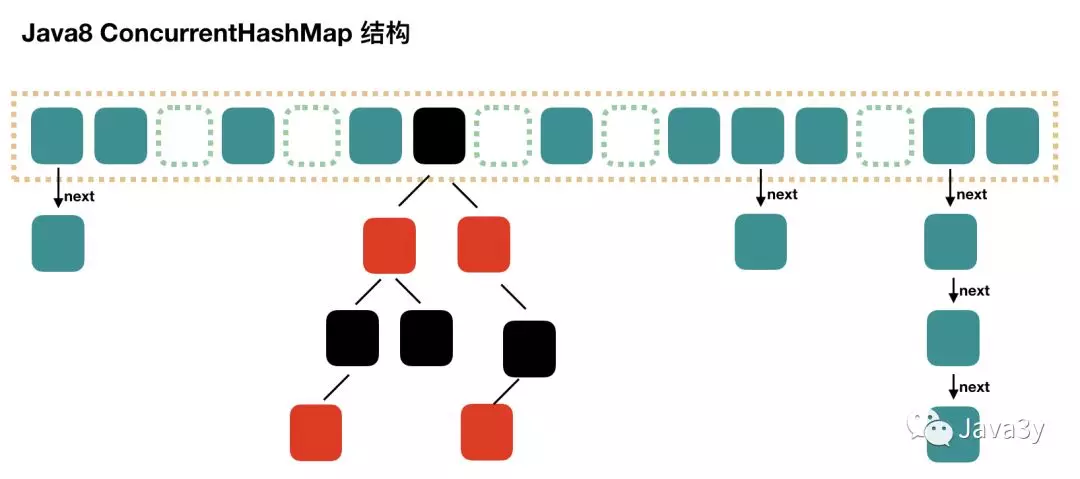
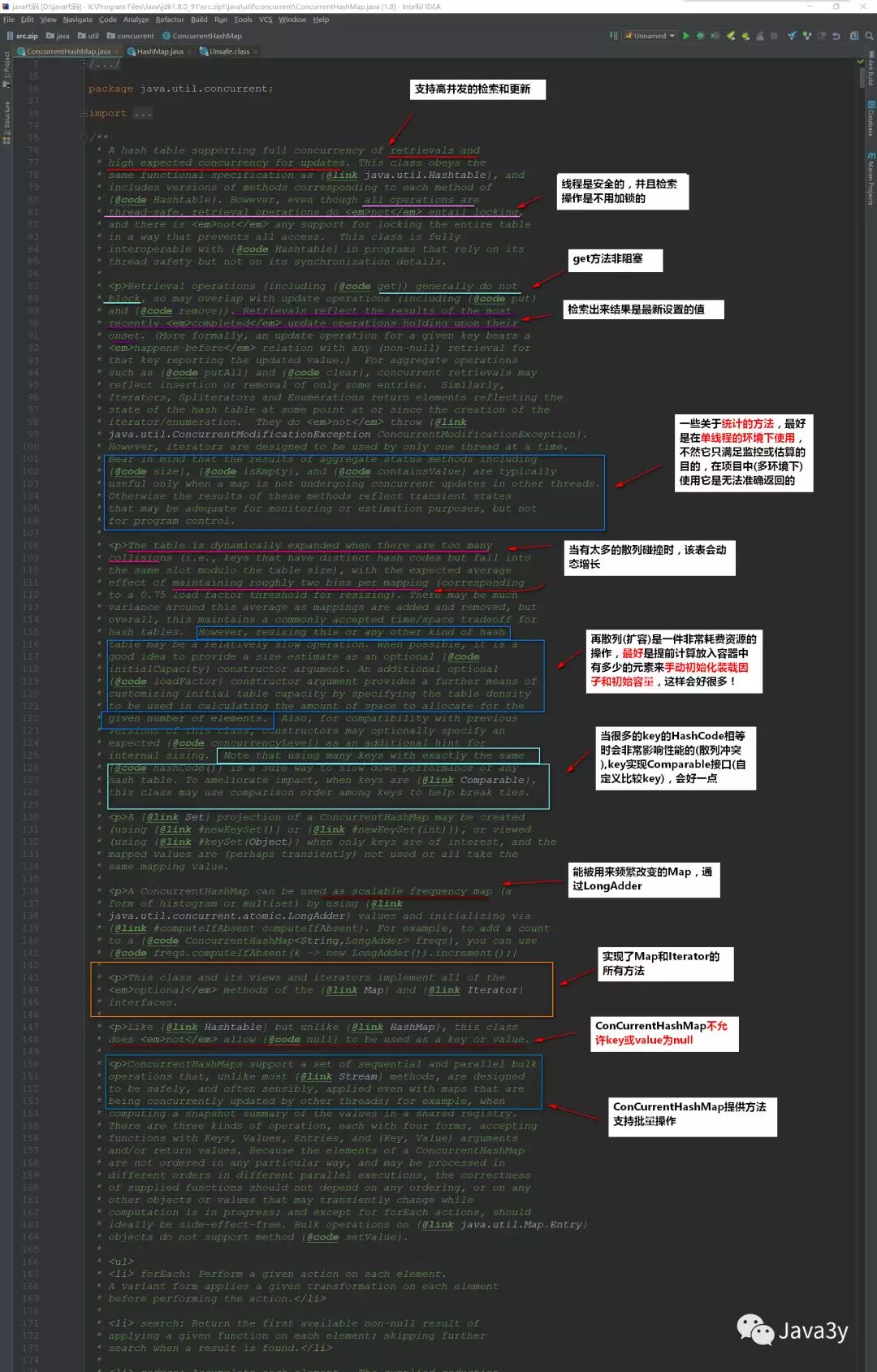
根据上面注释我们可以简单总结:
- JDK1.8底层是散列表+红黑树
- ConCurrentHashMap支持高并发的访问和更新,它是线程安全的
- 检索操作不用加锁,get方法是非阻塞的
- key和value都不允许为null
JDK1.7底层实现
上面指明的是JDK1.8底层是:散列表+红黑树,也就意味着,JDK1.7的底层跟JDK1.8是不同的~
JDK1.7的底层是:segments+HashEntry数组:
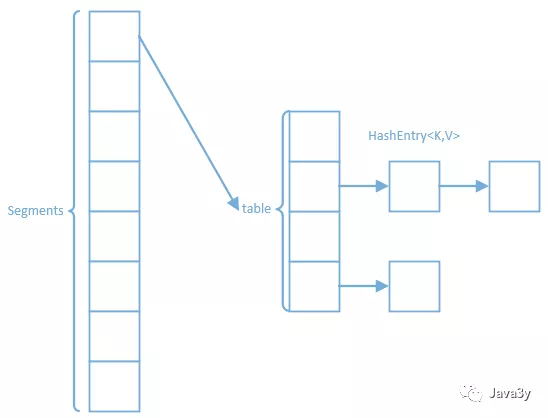
- Segment继承了ReentrantLock,每个片段都有了一个锁,叫做“锁分段”
有了Hashtable为啥需要ConCurrentHashMap
- Hashtable是在每个方法上都加上了Synchronized完成同步,效率低下。
- ConcurrentHashMap通过在部分加锁和利用CAS算法来实现同步。
CAS算法和volatile简单介绍
在看ConCurrentHashMap源码之前,我们来简单讲讲CAS算法和volatile关键字
CAS(比较与交换,Compare and swap) 是一种有名的无锁算法
CAS有3个操作数
- 内存值V
- 旧的预期值A
- 要修改的新值B
当且仅当预期值A和内存值V相同时,将内存值V修改为B,否则什么都不做
- 当多个线程尝试使用CAS同时更新同一个变量时,只有其中一个线程能更新变量的值(A和内存值V相同时,将内存值V修改为B),而其它线程都失败,失败的线程并不会被挂起,而是被告知这次竞争中失败,并可以再次尝试(否则什么都不做)
看了上面的描述应该就很容易理解了,先比较是否相等,如果相等则替换(CAS算法)
接下来我们看看volatile关键字,在初学的时候也很少使用到volatile这个关键字。反正我没用到,而又经常在看Java相关面试题的时候看到它,觉得是一个挺神秘又很难的一个关键字。其实不然,还是挺容易理解的~
volatile经典总结:volatile仅仅用来保证该变量对所有线程的可见性,但不保证原子性
我们将其拆开来解释一下:
- 保证该变量对所有线程的可见性
- 在多线程的环境下:当这个变量修改时,所有的线程都会知道该变量被修改了,也就是所谓的“可见性”
- 不保证原子性
- 修改变量(赋值)实质上是在JVM中分了好几步,而在这几步内(从装载变量到修改),它是不安全的。
ConCurrentHashMap域
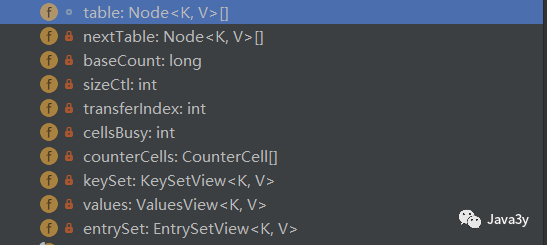
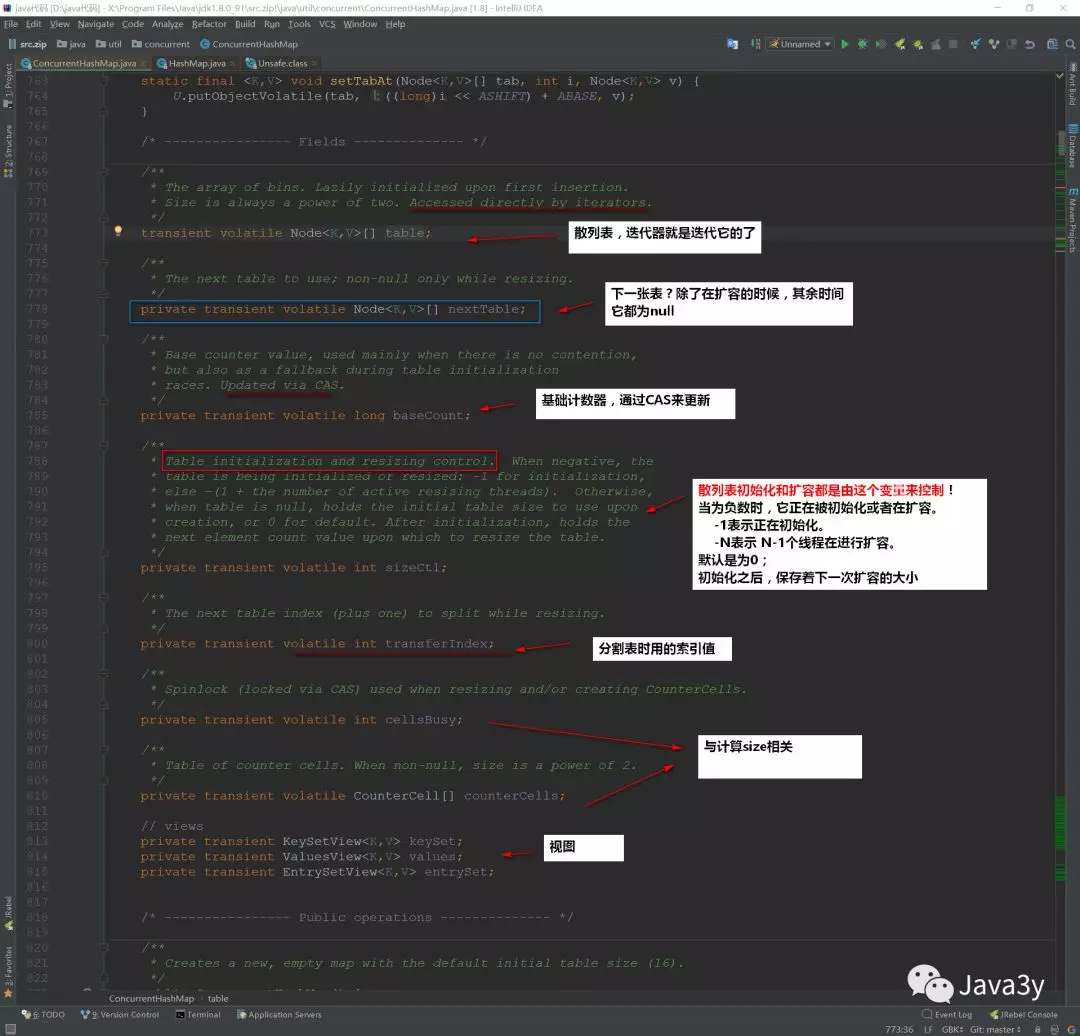
ConCurrentHashMap构造方法
ConcurrentHashMap的构造方法有5个:
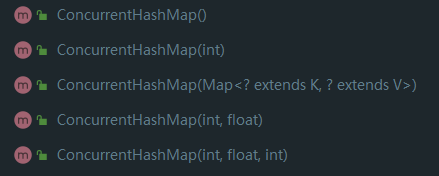
具体实现
/**
* Creates a new, empty map with the default initial table size (16).
*/
public ConcurrentHashMap() {
}
/**
* Creates a new, empty map with an initial table size
* accommodating the specified number of elements without the need
* to dynamically resize.
*
* @param initialCapacity The implementation performs internal
* sizing to accommodate this many elements.
* @throws IllegalArgumentException if the initial capacity of
* elements is negative
*/
public ConcurrentHashMap(int initialCapacity) {
if (initialCapacity < 0)
throw new IllegalArgumentException();
int cap = ((initialCapacity >= (MAXIMUM_CAPACITY >>> 1)) ?
MAXIMUM_CAPACITY :
tableSizeFor(initialCapacity + (initialCapacity >>> 1) + 1));
this.sizeCtl = cap;
}
/**
* Creates a new map with the same mappings as the given map.
*
* @param m the map
*/
public ConcurrentHashMap(Map<? extends K, ? extends V> m) {
this.sizeCtl = DEFAULT_CAPACITY;
putAll(m);
}
/**
* Creates a new, empty map with an initial table size based on
* the given number of elements ({@code initialCapacity}) and
* initial table density ({@code loadFactor}).
*
* @param initialCapacity the initial capacity. The implementation
* performs internal sizing to accommodate this many elements,
* given the specified load factor.
* @param loadFactor the load factor (table density) for
* establishing the initial table size
* @throws IllegalArgumentException if the initial capacity of
* elements is negative or the load factor is nonpositive
*
* @since 1.6
*/
public ConcurrentHashMap(